
Powdery Mildew on Succulents: Symptoms, Treatment, and Prevention

Powdery mildew is a common fungal disease that affects a wide range of plants, including succulents. It is characterized by a white or gray powdery coating on the leaves, stems, and flowers of the affected plants. Powdery mildew can weaken the plant and hinder its growth, making it important for succulent enthusiasts to understand the symptoms, treatment options, and prevention strategies for this fungal infection.
We will explore the symptoms of powdery mildew on succulents, including how to identify the disease and distinguish it from other common issues. We will discuss various treatment methods, both natural and chemical, that can be used to control and eradicate powdery mildew. Additionally, we will provide tips on how to prevent the disease from occurring in the first place, including proper care practices and environmental adjustments. By the end of this article, you will have a comprehensive understanding of powdery mildew on succulents and how to effectively manage it.
- Remove affected leaves and discard them
- Increase air circulation around the plants by spacing them apart
- Avoid overhead watering and instead water at the base of the plants
- Apply a fungicide specifically designed for powdery mildew on succulents
- Keep the succulents in a well-lit area with plenty of sunlight
- Avoid overcrowding the plants, as this can promote the spread of powdery mildew
- Apply a thin layer of horticultural oil to the leaves to suffocate the powdery mildew spores
- Use a mixture of water and baking soda as a natural fungicide to treat powdery mildew
- Regularly clean and disinfect tools and pots to prevent the spread of powdery mildew
- Monitor the humidity levels in the environment and try to keep it below 50% to discourage powdery mildew growth
- Frequently Asked Questions
Remove affected leaves and discard them
Powdery mildew is a common fungal disease that affects many types of plants, including succulents. If you notice powdery white spots or patches on the leaves of your succulents, it is likely that they have been infected with powdery mildew.
To prevent the spread of powdery mildew and protect the health of your succulents, it is important to remove the affected leaves as soon as you notice the symptoms. Carefully inspect each leaf and look for signs of the white powdery substance. Using clean and sharp scissors or pruning shears, cut off the infected leaves at the base.
It is crucial to discard the affected leaves properly to prevent the disease from spreading to other plants. Do not compost the infected leaves, as the fungal spores can survive and potentially infect other plants in the future. Instead, seal the removed leaves in a plastic bag and dispose of them in the trash.
Note: It is important to practice good hygiene while handling infected leaves to prevent accidentally spreading the fungal spores. Wash your hands thoroughly after handling infected plants or use gloves to minimize contact.
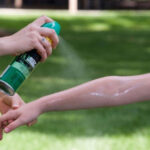 Choosing Bug Spray for Succulents: Safety and Effectiveness
Choosing Bug Spray for Succulents: Safety and EffectivenessIncrease air circulation around the plants by spacing them apart
Powdery mildew is a common fungal disease that can affect succulents. One effective way to prevent its occurrence is by increasing air circulation around the plants. By spacing them apart, you create room for air to flow freely, which helps reduce the humidity levels that powdery mildew thrives in.
Avoid overhead watering and instead water at the base of the plants
Symptoms of Powdery Mildew on Succulents
If you notice a powdery white substance on the leaves, stems, or flowers of your succulents, chances are they are infected with powdery mildew. This fungal disease commonly affects succulents and can cause significant damage if not treated promptly.
Treatment for Powdery Mildew on Succulents
Fortunately, there are several effective treatment options available to combat powdery mildew on succulents. One of the first steps you should take is to remove any infected plant parts. Prune the affected leaves, stems, or flowers using clean and sterilized tools to prevent the disease from spreading.
After pruning, it is crucial to apply a suitable fungicide to control the powdery mildew. Look for a fungicide specifically labeled for use on succulents and follow the instructions carefully. Apply the fungicide evenly, making sure to cover all affected areas.
In addition to fungicides, there are also natural remedies that can help treat powdery mildew on succulents. One popular method is using a mixture of baking soda and water. Simply mix one tablespoon of baking soda with one gallon of water and spray the solution onto the infected plants.
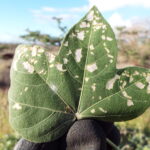 Understanding Leaf Loss in Succulents: Causes and Solutions
Understanding Leaf Loss in Succulents: Causes and SolutionsRepeat the treatment every 7 to 10 days until the powdery mildew is completely eradicated. Remember to always monitor your succulents closely and take action at the first signs of infection to prevent further spreading.
Prevention of Powdery Mildew on Succulents
Preventing powdery mildew on succulents is essential to maintain their health and beauty. Here are some preventive measures you can take:
- Avoid overhead watering: Watering from above can create a damp environment that promotes the growth of powdery mildew. Instead, water your succulents at the base or use a drip irrigation system.
- Provide good air circulation: Adequate air circulation helps prevent the buildup of moisture and reduces the chances of powdery mildew development. Space your succulents appropriately and avoid overcrowding.
- Maintain proper humidity: Succulents thrive in low humidity environments. Avoid placing them in areas with high humidity or use a dehumidifier if necessary.
- Remove fallen leaves and debris: Regularly clean up fallen leaves and debris around your succulents to prevent the accumulation of fungal spores.
- Monitor for early signs: Regularly inspect your succulents for any signs of powdery mildew. Early detection allows for immediate treatment and prevents the spread of the disease.
By implementing these preventive measures, you can significantly reduce the risk of powdery mildew on your succulents and keep them healthy and beautiful.
Apply a fungicide specifically designed for powdery mildew on succulents
Powdery mildew is a common fungal disease that can affect succulent plants, causing a white, powdery coating on the leaves and stems. If left untreated, it can weaken the plant and even lead to its death. To combat this fungal infection, it is important to apply a fungicide specifically formulated for powdery mildew on succulents.
When choosing a fungicide, look for one that is labeled for use on succulents and specifically mentions powdery mildew as one of the targeted diseases. This ensures that the product is designed to effectively combat the specific fungus affecting your plants.
Before applying the fungicide, carefully read and follow the instructions provided by the manufacturer. This will ensure that you apply the correct amount and use the product in a safe and effective manner.
 Is My Succulent Infested with Pests? Signs of White Web Infection
Is My Succulent Infested with Pests? Signs of White Web InfectionWhen applying the fungicide, make sure to thoroughly cover all affected areas of the plant, including the leaves, stems, and any visible signs of powdery mildew. It is important to apply the fungicide evenly and avoid excessive spraying, as this can potentially harm the plant.
Repeat the application as directed on the fungicide label, usually every 7-14 days, or as recommended by a horticulturist or plant expert. Consistency is key in effectively treating and preventing powdery mildew on succulents.
Remember, prevention is always better than cure. In addition to using a fungicide, it is important to create an environment that is less favorable for powdery mildew to thrive.
Ensure proper air circulation around your succulents by spacing them adequately and pruning any dense growth. Avoid overhead watering, as excess moisture on the leaves can create a conducive environment for powdery mildew.
Regularly inspect your succulents for any signs of powdery mildew and take immediate action if you notice any. Early detection and treatment can help prevent the spread of the disease and protect your plants.
Applying a fungicide specifically designed for powdery mildew on succulents is an effective method for treating and preventing this fungal disease. Combined with proper care practices and regular inspections, you can ensure the health and vitality of your succulent plants.
Keep the succulents in a well-lit area with plenty of sunlight
Succulents are known for their ability to thrive in sunny conditions. To prevent powdery mildew from affecting your succulents, it is important to provide them with a well-lit area that receives plenty of sunlight. Succulents generally require at least 6 hours of direct sunlight per day, so it is crucial to place them near a window or in a spot where they can receive adequate sunlight.
 Causes of Red Tips on Succulent Plants: A Comprehensive Guide
Causes of Red Tips on Succulent Plants: A Comprehensive GuideStrong sunlight not only helps to prevent powdery mildew, but it also promotes healthy growth and vibrant colors in succulents. However, be cautious of intense, scorching sunlight, especially during the hottest parts of the day, as it can damage the plants. If necessary, you can provide some shade during the peak hours of the sun to protect your succulents.
Additionally, make sure to rotate your succulents regularly to ensure that all sides of the plants receive equal exposure to sunlight. This will help prevent any imbalances in growth and minimize the risk of powdery mildew developing in shaded areas.
Avoid overcrowding the plants, as this can promote the spread of powdery mildew
Symptoms of Powdery Mildew on Succulents
One of the first signs of powdery mildew on succulents is the appearance of a white or gray powdery substance on the leaves, stems, or flowers. This powdery substance is actually a fungal growth, caused by the pathogen known as Erysiphe cichoracearum. As the infection progresses, the powdery mildew can spread and cover larger areas of the plant.
In addition to the visible powdery growth, infected succulents may also exhibit other symptoms such as stunted growth, distorted leaves, yellowing or browning of the foliage, and ultimately, a decline in overall plant health.
Treatment Options for Powdery Mildew on Succulents
If you notice powdery mildew on your succulents, it's important to take immediate action to prevent further spread and damage. Here are a few treatment options you can try:
- Pruning: Start by removing and discarding any heavily infected parts of the plant. This will help reduce the spread of the disease and prevent it from affecting other healthy plants nearby. Make sure to clean your pruning tools thoroughly after each use to avoid spreading the fungus.
- Fungicides: There are various fungicides available that can help control powdery mildew on succulents. Look for products specifically labeled for powdery mildew control and follow the instructions carefully. Keep in mind that prevention is key, so regular applications may be necessary.
- Natural Remedies: Some gardeners prefer to use natural remedies to combat powdery mildew. Options include neem oil, baking soda solution, or a mixture of water and vinegar. These natural treatments can be effective, but it's important to test them on a small area of the plant first to ensure they don't cause any adverse reactions.
Prevention Tips for Powdery Mildew on Succulents
Preventing powdery mildew is always better than treating an existing infection. Here are some preventive measures you can take to keep your succulents healthy:
 Understanding and Treating the White Substance on Succulents
Understanding and Treating the White Substance on Succulents- Adequate airflow: Ensure there is proper air circulation around your succulents by spacing them appropriately. Avoid overcrowding the plants, as this can promote the spread of powdery mildew.
- Water management: Avoid overwatering your succulents, as excessive moisture can create favorable conditions for the development of powdery mildew. Water the plants at their base, avoiding wetting the foliage whenever possible.
- Sunlight exposure: Succulents thrive in bright light conditions, so make sure to provide them with adequate sunlight. However, avoid placing them in direct, harsh sunlight, as this can stress the plants and make them more susceptible to infections.
- Cleanliness: Regularly clean and sanitize your gardening tools and containers to prevent the spread of fungal pathogens. This includes removing any fallen leaves or debris from around your succulents, as they can harbor fungal spores.
By following these prevention tips and promptly addressing any signs of powdery mildew, you can help keep your succulents healthy and thriving.
Apply a thin layer of horticultural oil to the leaves to suffocate the powdery mildew spores
Symptoms of Powdery Mildew on Succulents
One of the most common fungal diseases affecting succulents is powdery mildew. It appears as a white or gray powdery substance on the leaves, stems, and sometimes flowers of the plant. The powdery mildew spores thrive in warm and humid conditions, making succulents vulnerable to this infection, especially when grown indoors or in a greenhouse.
Treatment for Powdery Mildew on Succulents
If you notice powdery mildew on your succulents, it's essential to take prompt action to prevent the spread and potential damage to your plants. One effective treatment is to apply a thin layer of horticultural oil to the leaves. The oil suffocates the powdery mildew spores, inhibiting their growth and preventing further infection. Make sure to cover both sides of the leaves and reapply the oil as directed by the product's instructions.
Additionally, you can use a homemade solution by mixing one part rubbing alcohol or isopropyl alcohol with three parts water. Apply this mixture using a spray bottle, ensuring thorough coverage of the affected areas. Repeat this treatment every few days until the powdery mildew is under control.
Another option is to use a fungicidal spray specifically formulated for powdery mildew. These products are available at garden centers and nurseries. Follow the instructions on the label carefully to ensure proper application and dosage.
Preventing Powdery Mildew on Succulents
Prevention is key when it comes to powdery mildew on succulents. Here are some measures you can take to minimize the risk:
- Proper air circulation: Arrange your succulents in a way that allows for adequate air circulation. Avoid overcrowding and ensure there is enough space between plants.
- Avoid overhead watering: Water your succulents at the base rather than overhead. This helps keep the leaves dry and reduces the chances of powdery mildew spores finding a suitable environment to thrive.
- Monitor humidity levels: Succulents prefer low humidity environments. Use a dehumidifier indoors or ensure proper ventilation in your greenhouse to maintain ideal humidity levels.
- Proper sunlight exposure: Succulents thrive in bright, indirect sunlight. Ensure they receive enough light but avoid exposing them to intense, direct sunlight for extended periods, as this can stress the plants and make them more susceptible to diseases.
By implementing these preventive measures and promptly treating any signs of powdery mildew, you can keep your succulents healthy and free from this common fungal infection.
 Causes of Blue Discoloration in Succulent Leaves
Causes of Blue Discoloration in Succulent LeavesUse a mixture of water and baking soda as a natural fungicide to treat powdery mildew
Symptoms of Powdery Mildew on Succulents
Powdery mildew is a common fungal disease that can affect succulents, causing white or gray powdery patches to appear on the leaves and stems. These patches are actually clusters of fungal spores that can spread rapidly if left untreated. In addition to the unsightly appearance, powdery mildew can weaken the succulent and make it more susceptible to other diseases.
Treating Powdery Mildew on Succulents
If you notice powdery mildew on your succulents, it's important to act quickly to prevent the disease from spreading. One effective and natural treatment is to use a mixture of water and baking soda as a fungicide. To prepare the solution, simply mix 1 tablespoon of baking soda with 1 gallon of water. Transfer the solution into a spray bottle and thoroughly spray the affected succulents, making sure to cover both the upper and lower surfaces of the leaves.
It's important to note that baking soda can increase the pH level of the soil, so it's recommended to test the soil's pH level before applying the treatment. If the soil pH is already alkaline, it's advisable to use an alternative method to avoid disrupting the succulent's growth.
Repeat this treatment every 7-10 days until the powdery mildew is completely eliminated. Be sure to monitor the affected succulents closely and remove any heavily infected leaves to prevent further spread of the disease.
Preventing Powdery Mildew on Succulents
Prevention is key when it comes to powdery mildew on succulents. Here are some tips to help prevent the disease from taking hold:
- Provide Adequate Air Circulation: Succulents require good air circulation to prevent the buildup of humidity, which can promote the growth of powdery mildew. Avoid overcrowding your succulents and ensure they are not placed in areas with poor air circulation.
- Avoid Overwatering: Excessive moisture can create a favorable environment for powdery mildew. Water your succulents sparingly, allowing the soil to dry out between waterings. Avoid overhead watering and direct water to the base of the plant to prevent water from sitting on the leaves.
- Practice Proper Sanitation: Regularly clean your succulent containers, removing any fallen leaves or debris that could harbor fungal spores. This will help prevent the spread of powdery mildew to healthy plants.
- Choose Resistant Varieties: Some succulent varieties are more resistant to powdery mildew than others. When selecting new succulents for your collection, consider choosing varieties known for their resistance to fungal diseases.
By following these preventive measures and promptly treating any signs of powdery mildew, you can keep your succulents healthy and free from this common fungal disease.
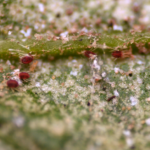 Eliminating White Webs on Succulents: A Comprehensive Guide
Eliminating White Webs on Succulents: A Comprehensive GuideRegularly clean and disinfect tools and pots to prevent the spread of powdery mildew
Powdery mildew is a common fungal disease that can affect succulents, causing white powdery patches on their leaves. To prevent the spread of powdery mildew, it is important to maintain good hygiene practices when working with your succulents. Regularly cleaning and disinfecting your tools and pots can help minimize the risk of infection.
Here are some steps you can follow to keep your tools and pots clean and free from powdery mildew:
- Remove any visible powdery mildew: Before cleaning your tools and pots, inspect them for any signs of powdery mildew. If you notice any white powdery patches, gently wipe them off using a damp cloth or paper towel. Be careful not to spread the spores to other plants.
- Clean your tools: Use a mild detergent or dish soap mixed with water to clean your gardening tools. Scrub them gently with a brush or sponge to remove any dirt, debris, or potential fungal spores. Rinse the tools thoroughly with clean water and dry them before using them again.
- Disinfect your tools: After cleaning, it is important to disinfect your tools to kill any remaining fungal spores. You can use a solution of 1 part bleach to 9 parts water or a household disinfectant specifically designed for gardening tools. Soak the tools in the solution for 10-15 minutes, then rinse them thoroughly with clean water and dry them.
- Clean your pots: Empty the pots and remove any dead leaves or debris. Wash the pots with warm water and a mild detergent to remove any dirt or residue. Scrub the pots gently with a brush or sponge, paying extra attention to the inside and the bottom where fungal spores may accumulate. Rinse the pots thoroughly with clean water and allow them to air dry before reusing them.
- Disinfect your pots: Once the pots are clean, it is important to disinfect them to eliminate any remaining fungal spores. You can use a solution of 1 part bleach to 9 parts water or a commercial disinfectant suitable for gardening. Soak the pots in the solution for 10-15 minutes, then rinse them thoroughly with clean water and allow them to air dry.
By regularly cleaning and disinfecting your tools and pots, you can greatly reduce the risk of powdery mildew spreading to your succulents. Prevention is key when it comes to managing this fungal disease, so make sure to incorporate these hygiene practices into your regular succulent care routine.
Monitor the humidity levels in the environment and try to keep it below 50% to discourage powdery mildew growth
Powdery mildew is a common fungal disease that affects many plants, including succulents. If you notice a white, powdery substance on the leaves or stems of your succulent plants, it is likely that they have been infected with powdery mildew. This fungal disease can be unsightly and, if left untreated, can seriously harm your plants.
To prevent and treat powdery mildew on your succulents, it is important to monitor the humidity levels in the environment. Powdery mildew thrives in high humidity, so try to keep the humidity below 50%. This can be achieved by providing good air circulation around your plants and avoiding overwatering.
Symptoms of Powdery Mildew
Identifying the symptoms of powdery mildew on your succulents is crucial for early detection and treatment. The most common symptom is the appearance of a white, powdery substance on the leaves, stems, and sometimes even flowers of your plants. This substance may resemble flour or talcum powder and can easily be wiped off with your fingers.
 White-Dotted Succulents: Potential Poisonous Effects on Pets
White-Dotted Succulents: Potential Poisonous Effects on PetsIn addition to the powdery substance, infected leaves may also show other signs such as yellowing, browning, curling, or distortion. As the disease progresses, the leaves may become stunted or even die off.
Treatment Options
Once you have identified powdery mildew on your succulents, it is important to take immediate action to prevent further spread and damage. There are several treatment options available:
- Prune affected parts: Start by pruning off any infected leaves or stems. This will help reduce the spread of the disease and allow your plant to focus its energy on healthy growth.
- Natural remedies: There are several natural remedies that can be effective in treating powdery mildew. One option is to mix one part milk with nine parts water and spray it onto the affected areas. Another option is to use a solution of baking soda and water (1 tablespoon baking soda per gallon of water).
- Fungicides: If the infection is severe or the natural remedies do not work, you may need to resort to using fungicides. Be sure to choose a fungicide that is safe for use on succulents and follow the instructions carefully.
Prevention Tips
Preventing powdery mildew on your succulents is always better than dealing with an infection. Here are some preventive measures you can take:
- Avoid overwatering: Succulents are adapted to dry conditions and do not require frequent watering. Overwatering can create a humid environment that promotes the growth of powdery mildew.
- Provide good air circulation: Make sure your succulents are not overcrowded and have enough space between them. This will help promote air circulation, which can prevent the development of powdery mildew.
- Remove fallen leaves: Fallen leaves can harbor fungal spores, so it is important to remove them promptly and dispose of them properly.
- Regularly inspect your plants: Regularly check your succulents for any signs of powdery mildew or other diseases. Early detection can help prevent the spread of the infection and allow for timely treatment.
By following these preventive measures and taking prompt action if an infection occurs, you can keep your succulents healthy and free from powdery mildew.
Frequently Asked Questions
1. What are the symptoms of powdery mildew on succulents?
The symptoms of powdery mildew on succulents include white or grayish powdery patches on the leaves, stems, or flowers, as well as stunted growth and leaf distortion.
2. How can I treat powdery mildew on my succulents?
 Identifying and Treating Root Rot in Succulents: Signs and Options
Identifying and Treating Root Rot in Succulents: Signs and OptionsTo treat powdery mildew on succulents, you can try using a fungicidal spray specifically designed for powdery mildew, or a homemade solution of water and baking soda. Remove heavily infected leaves and improve air circulation around the plants.
3. Can I prevent powdery mildew from infecting my succulents?
Yes, you can prevent powdery mildew by providing proper care for your succulents. This includes avoiding overwatering, ensuring good air circulation, and providing enough sunlight. Regularly inspect your plants for any signs of infection and take prompt action.
4. Is powdery mildew harmful to humans or pets?
No, powdery mildew on succulents is not harmful to humans or pets. However, it can weaken the plants and affect their overall health and appearance if left untreated. Take necessary precautions to prevent the spread of the disease to other plants.
If you want to read more articles similar to Powdery Mildew on Succulents: Symptoms, Treatment, and Prevention, you can visit the Pests and Diseases category.

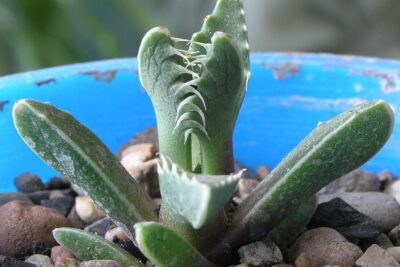

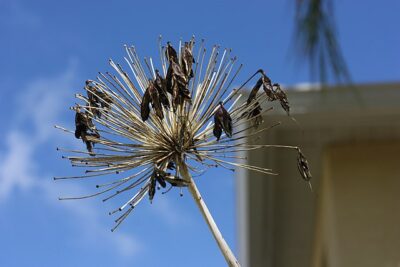
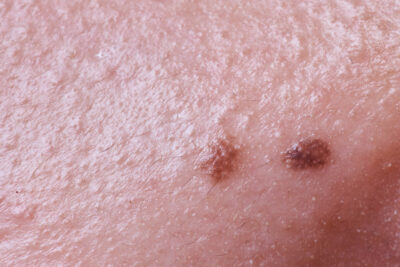
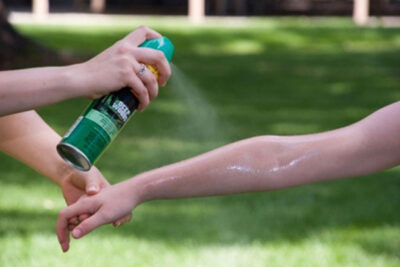
You Must Read